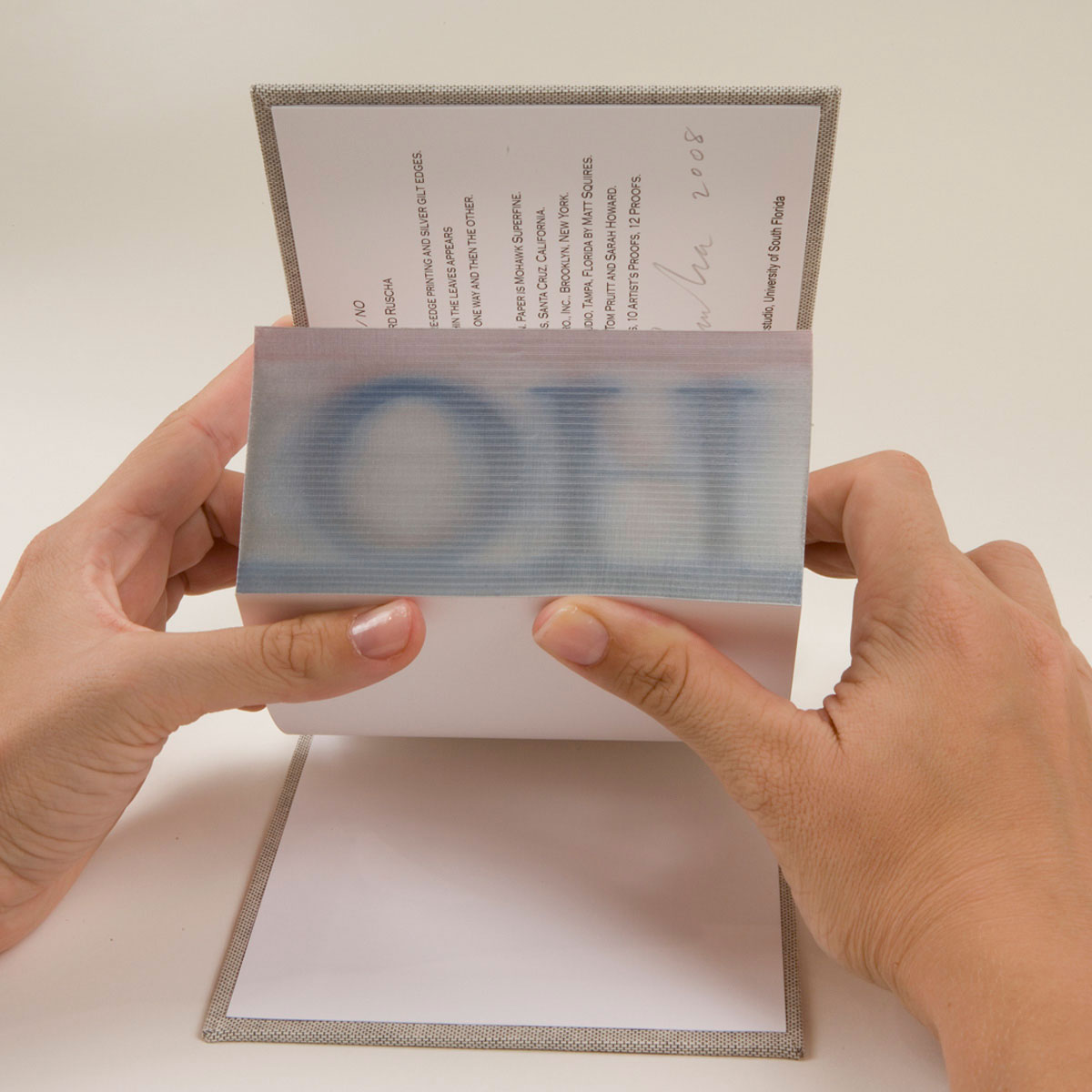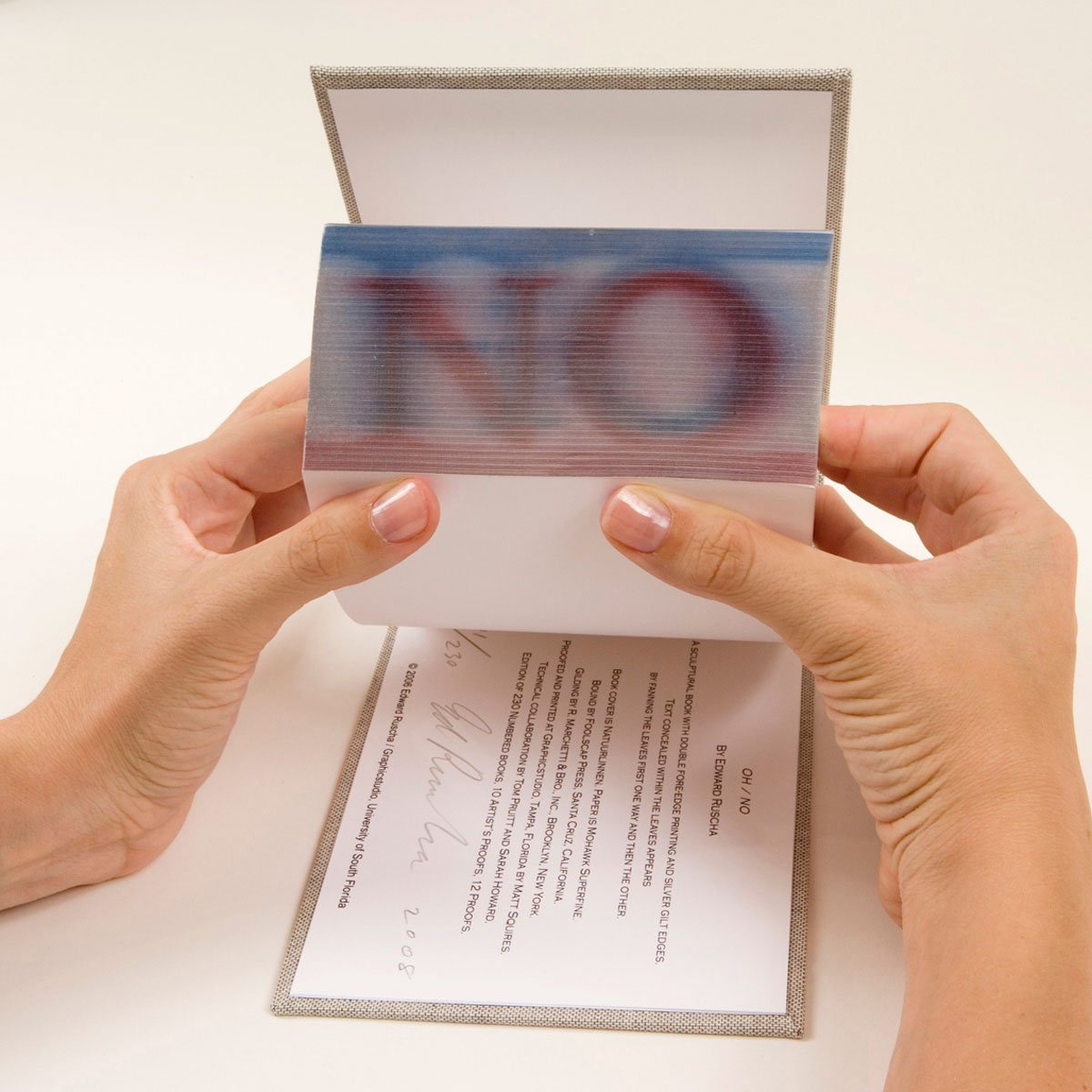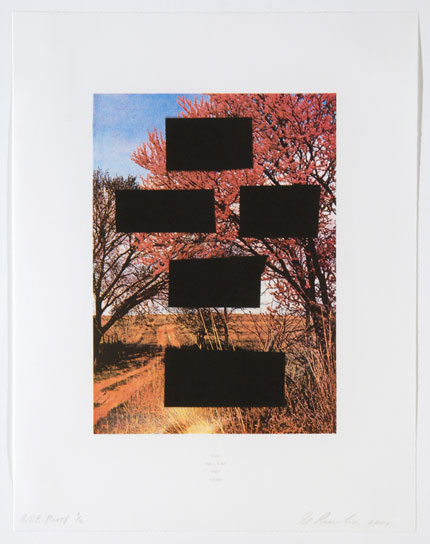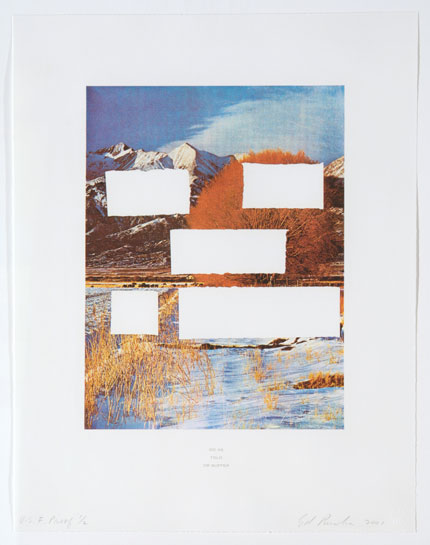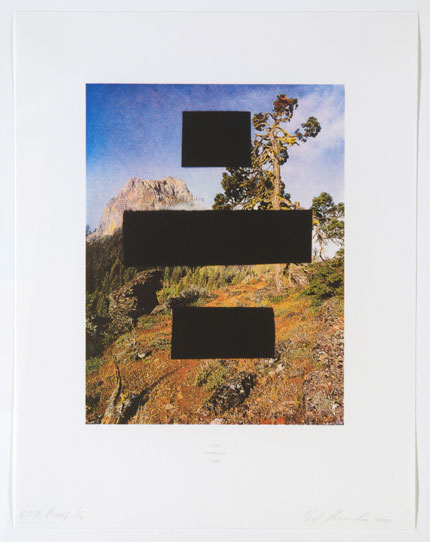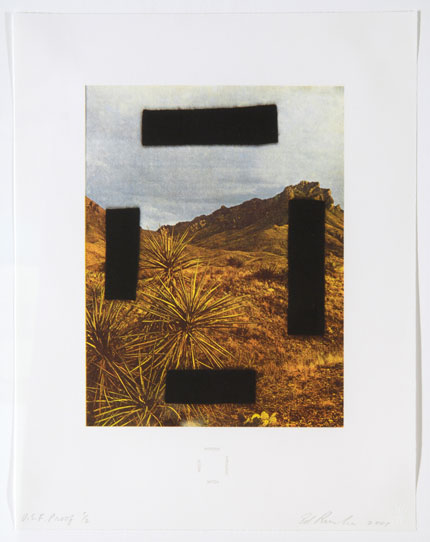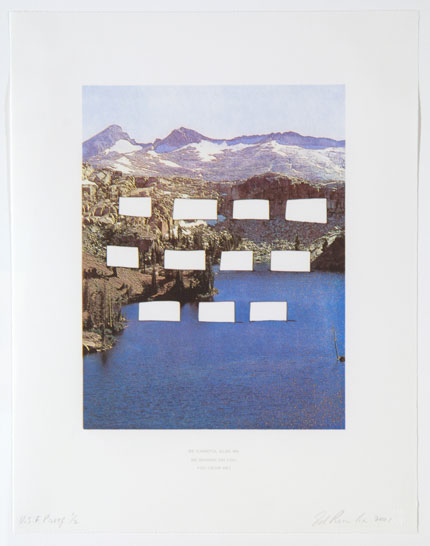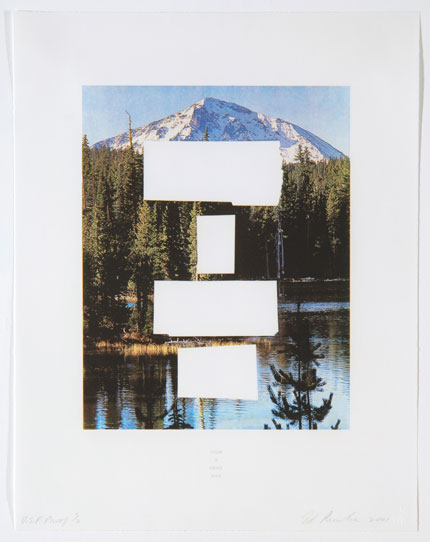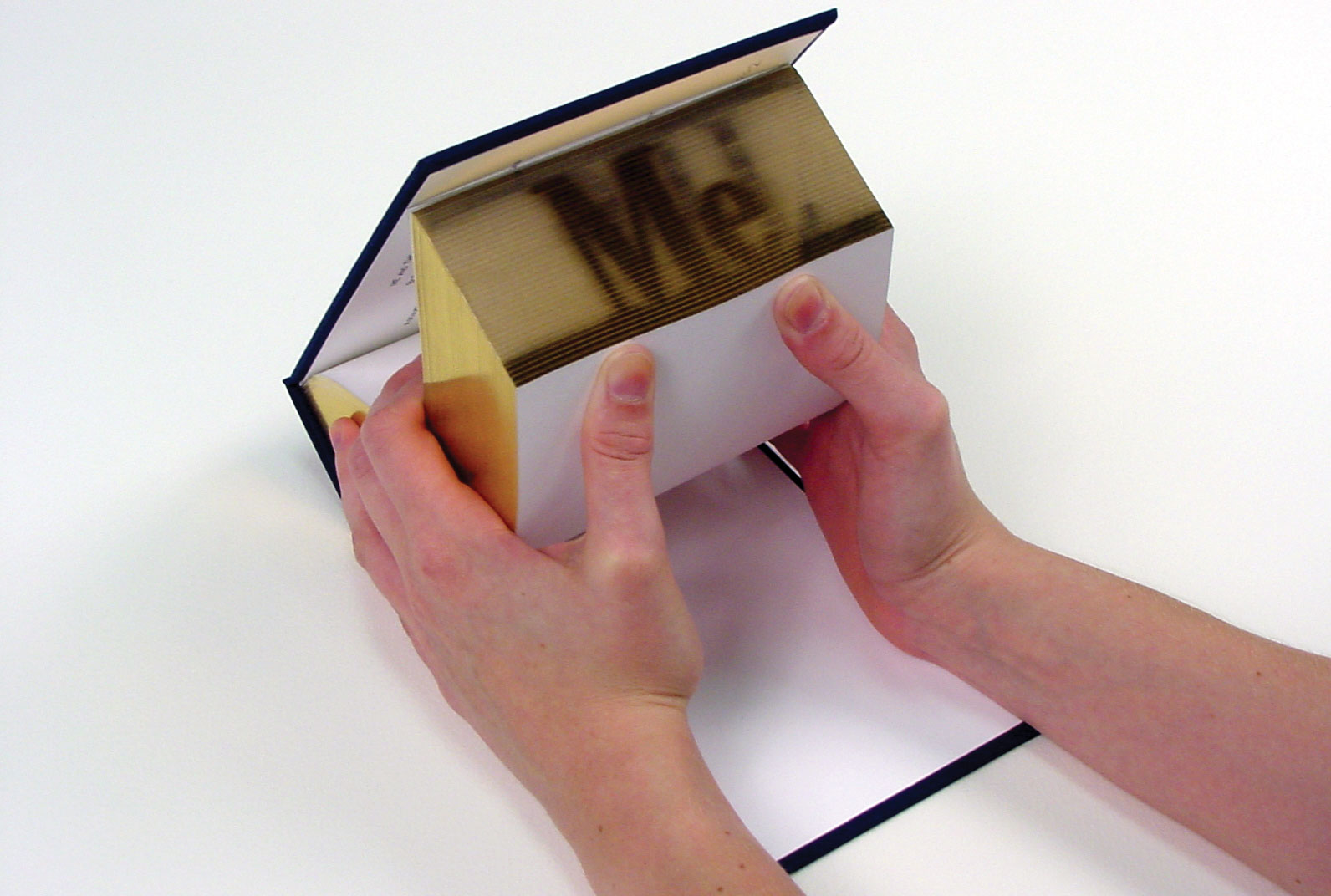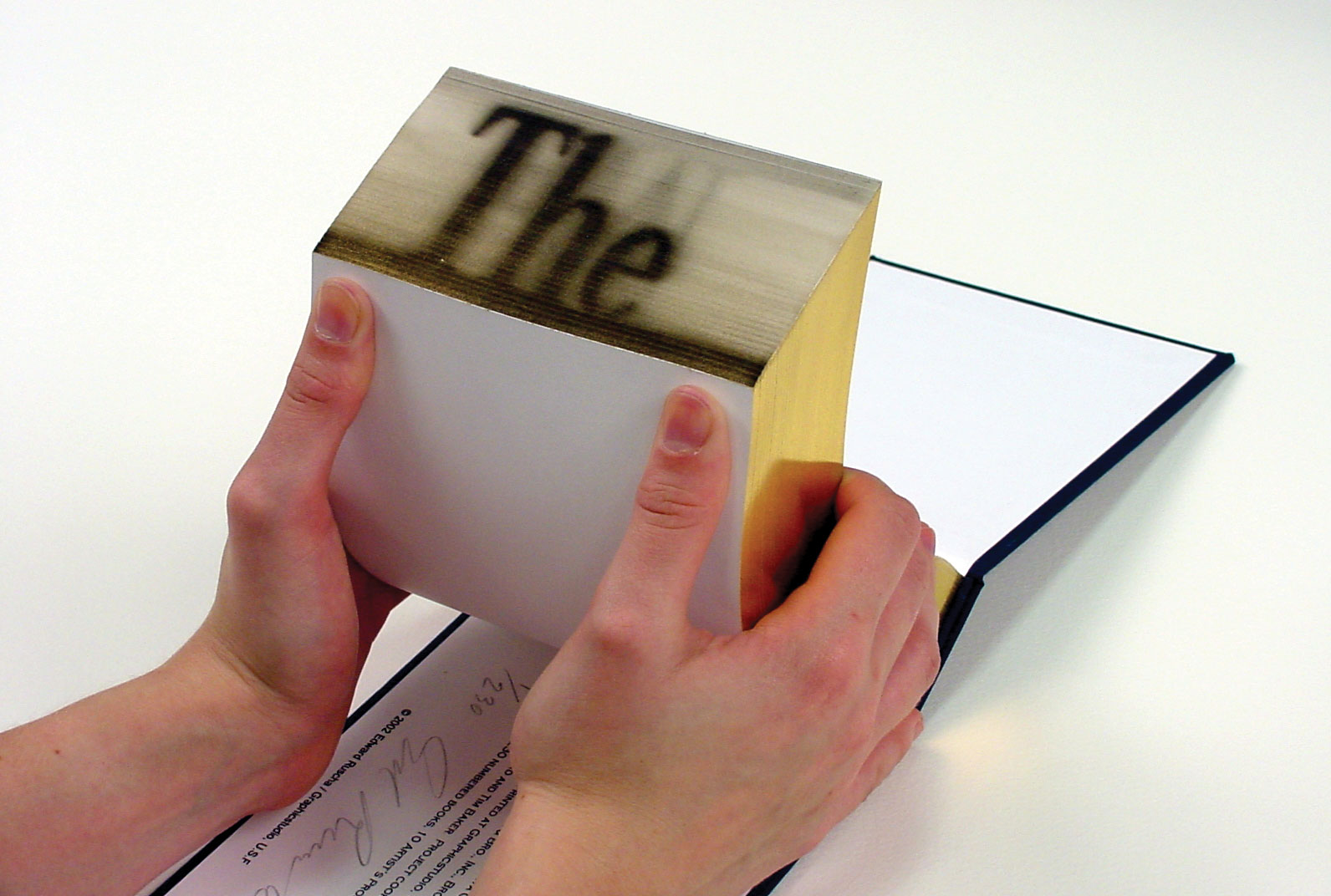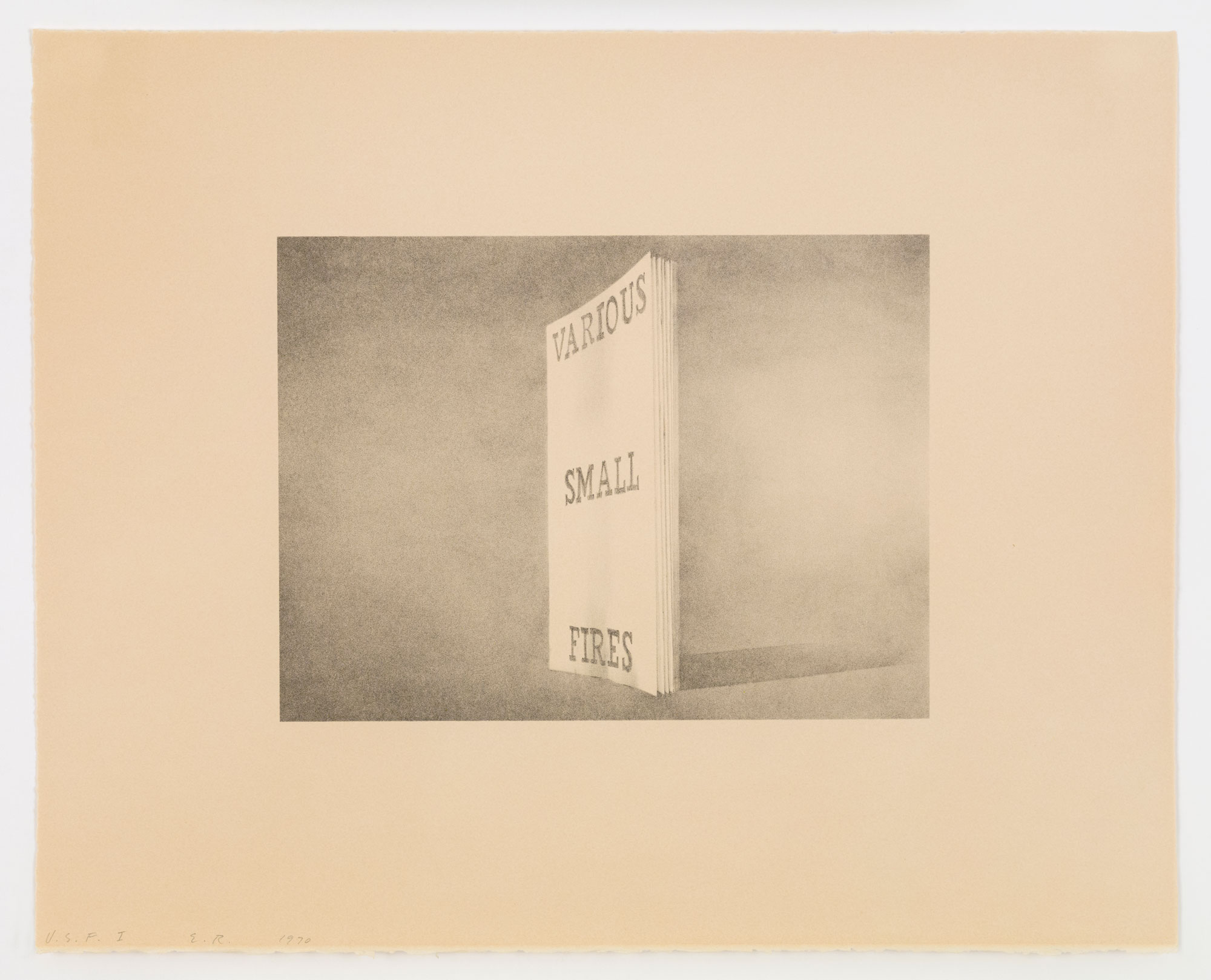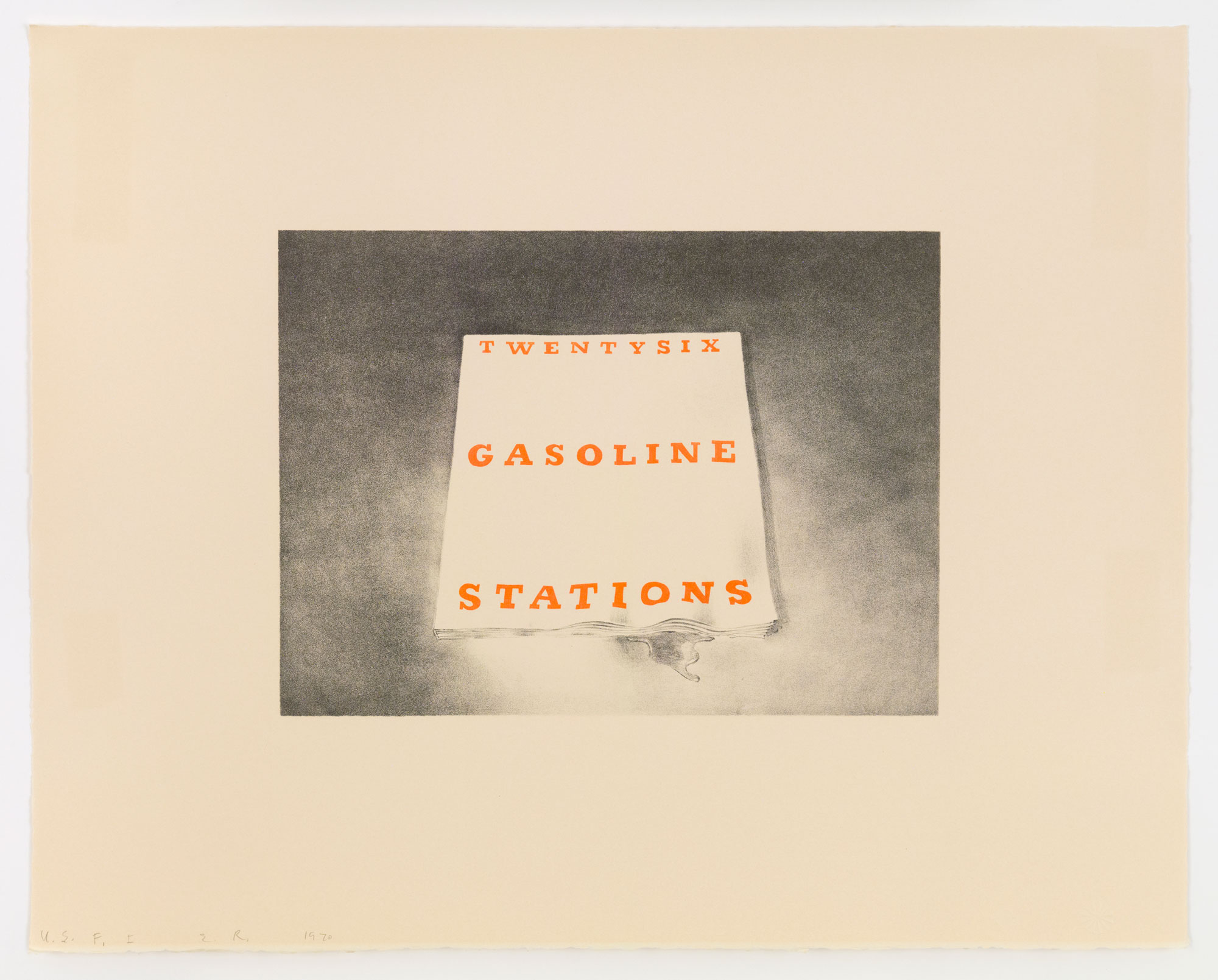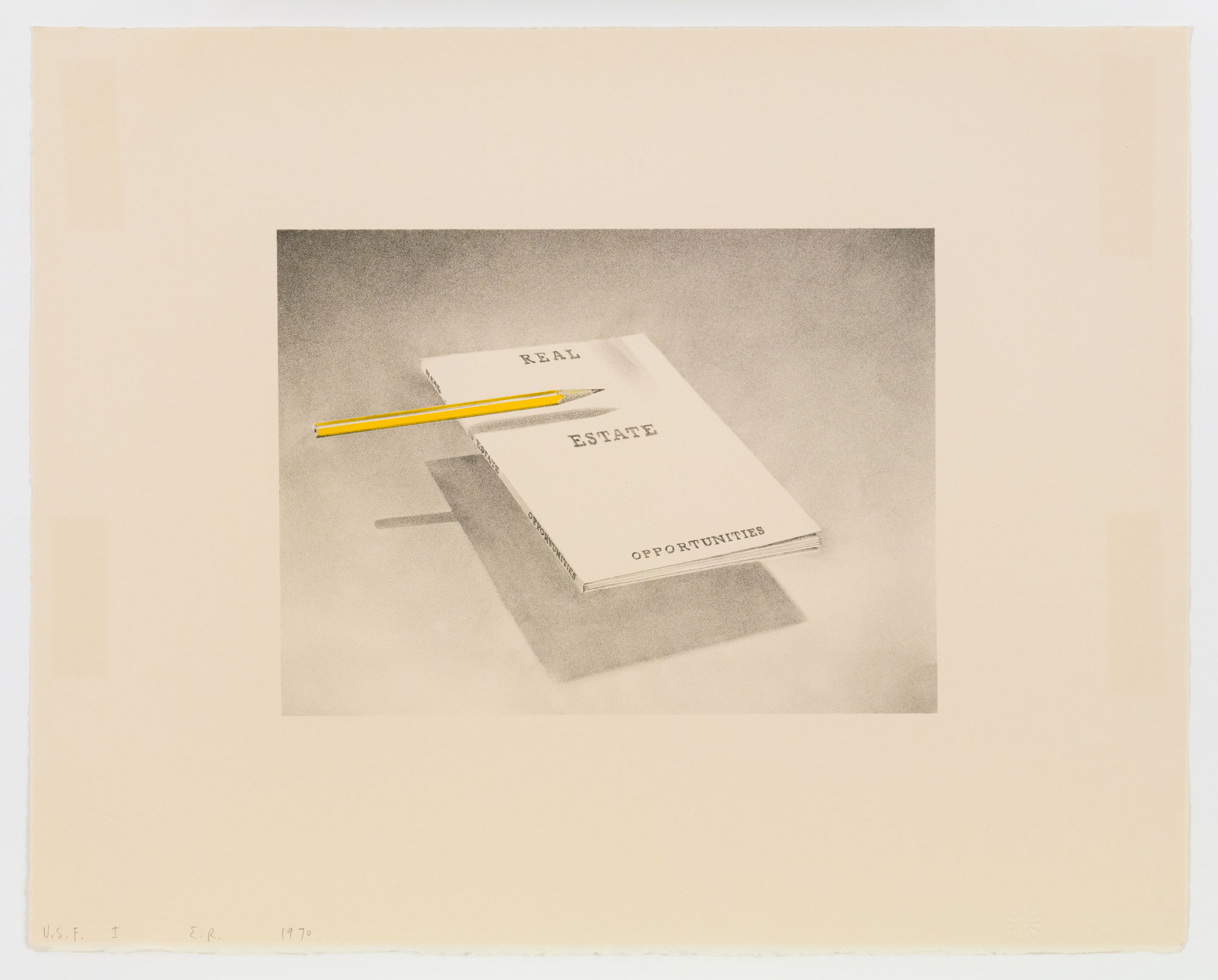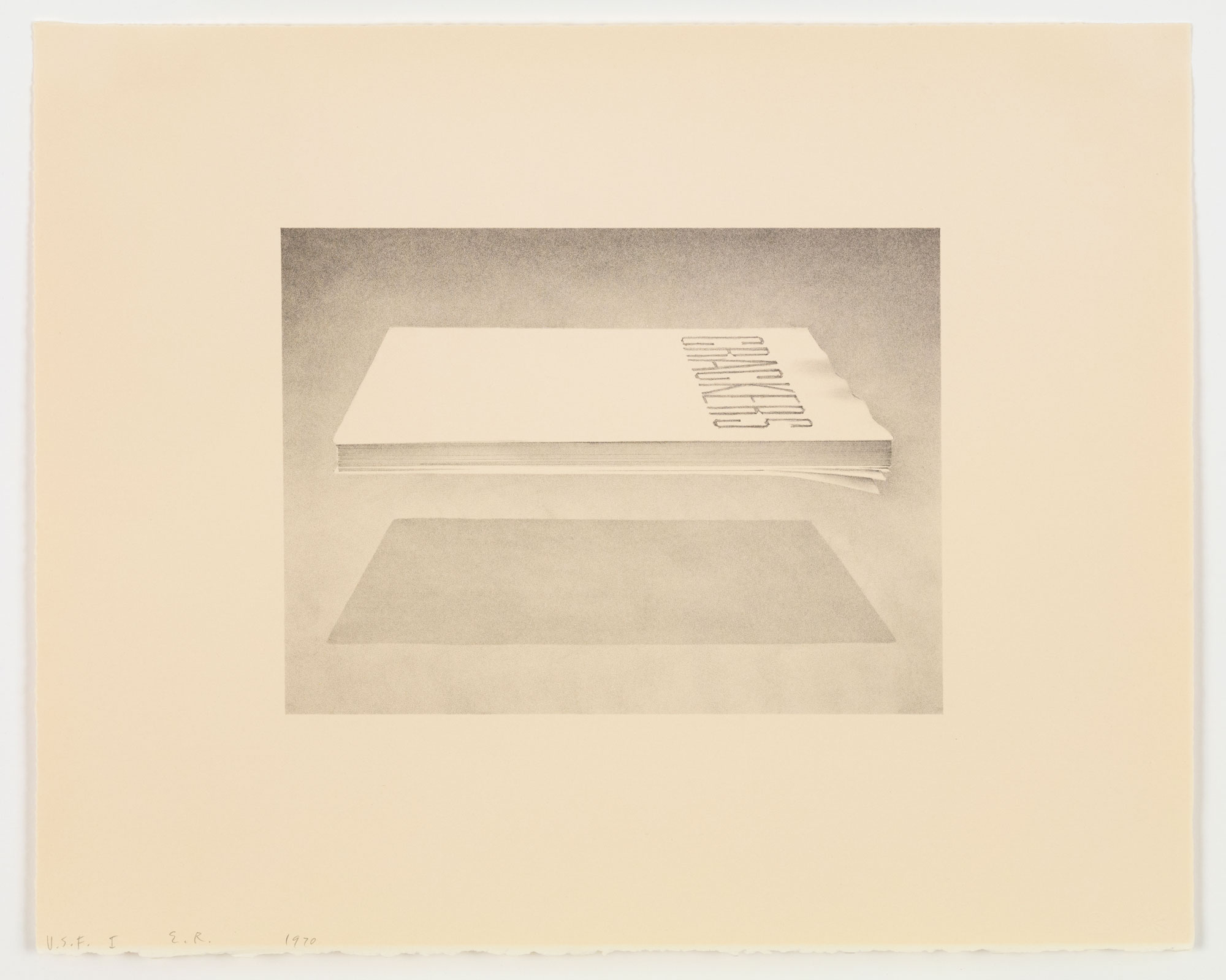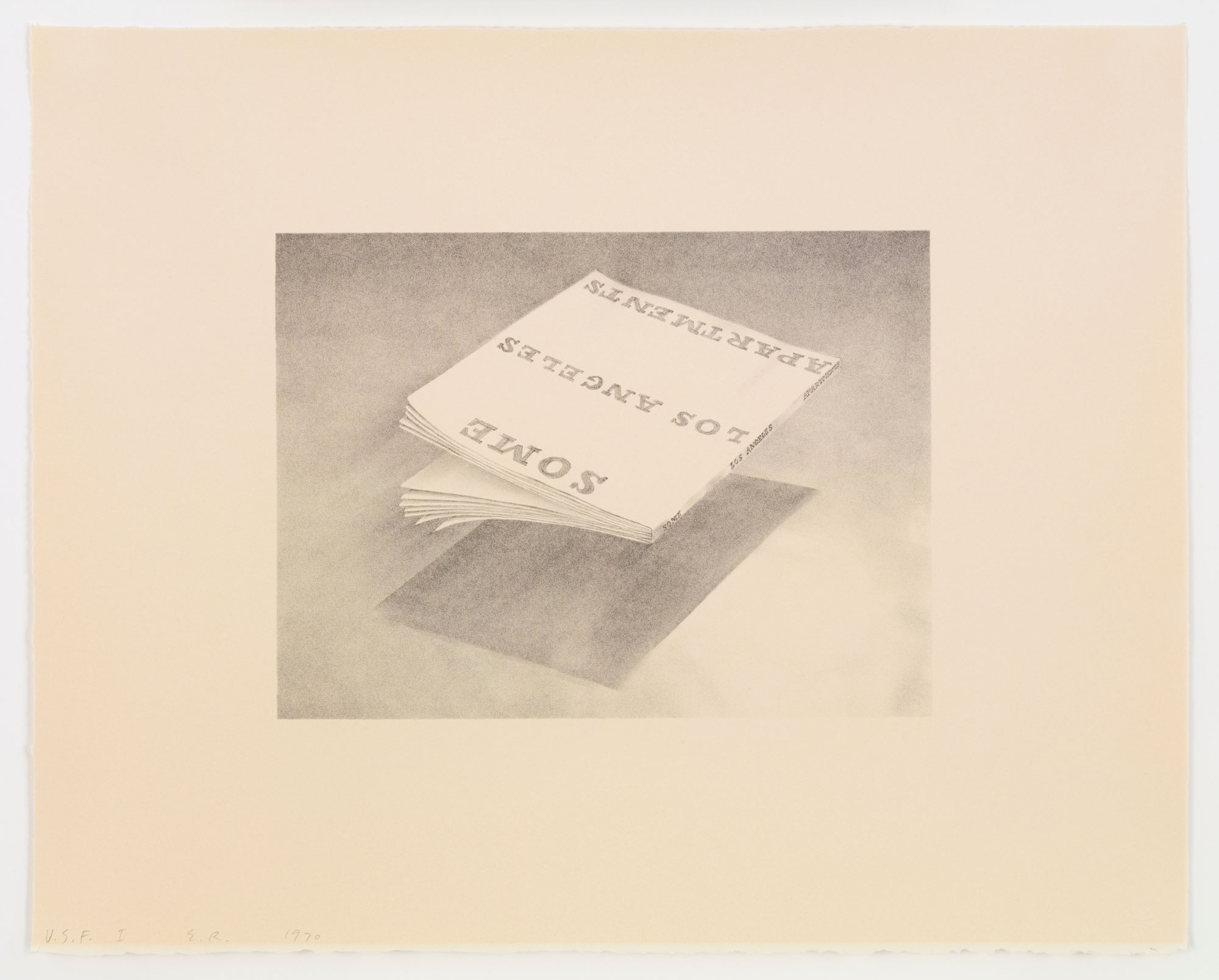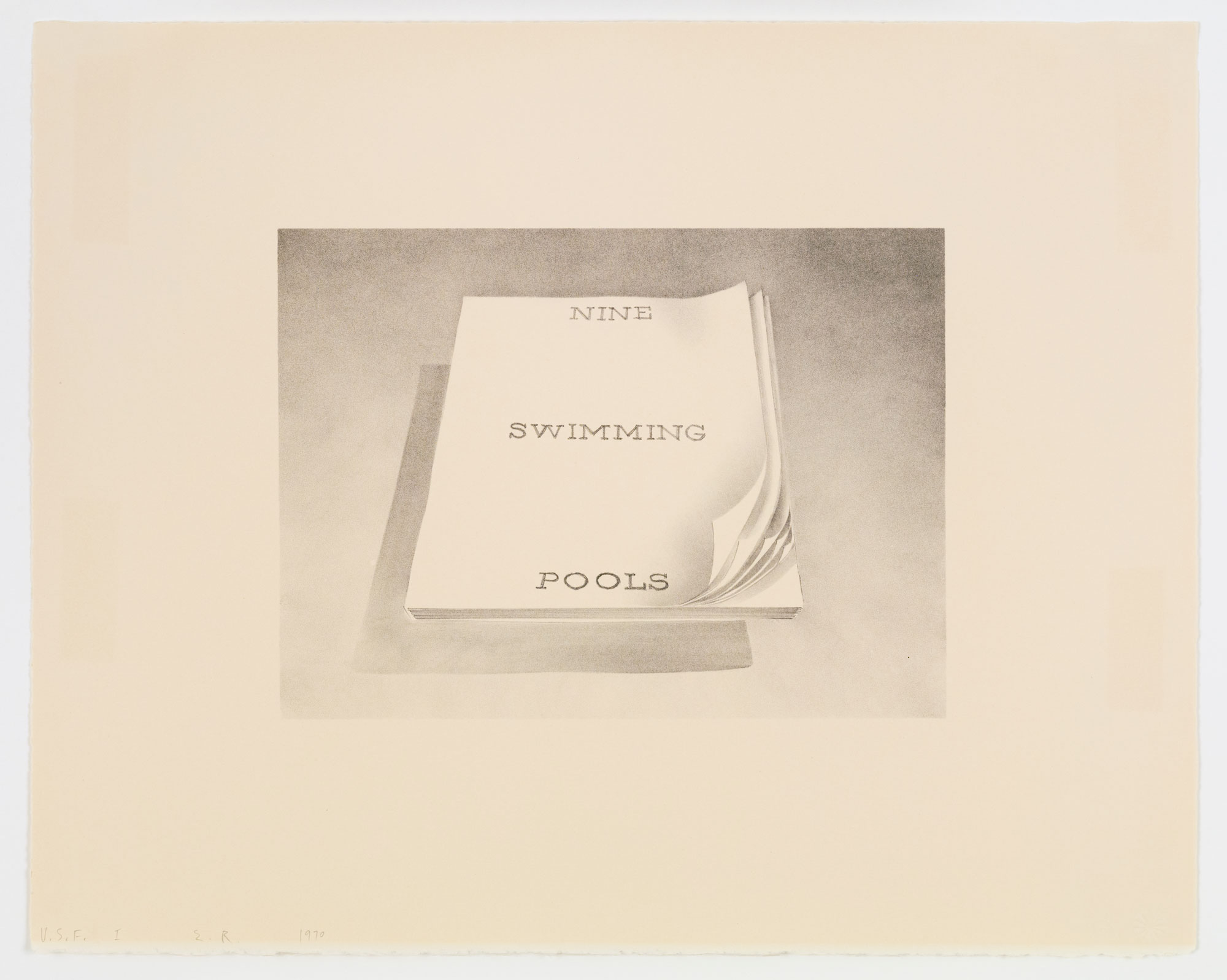
Ed Ruscha
OH / NO
2008
Cloth-covered hardbound book with two color fore-edge printing and silver leaf edges.
Text by the artist
Closed book: 5-1/4 x 7-1/2 x 2-1/16 inches
Edition: 230
$1,500.
Inquire now - gsoffice@usf.edu
OH / NO is a fore-edge book, with printing that appears when the gilt edge is fanned one way or another. Fore-edge painting was popular in the 18th century but rarely used today. Graphicstudio research encompasses the recapture and revitalization of such technology, enabling the development of fore-edge printing. The pages of the book are blank, perhaps a commentary on the meanings we would ascribe, or fail to ascribe, to such seemingly simple words.
When the book pages are fanned in one direction the text OH appears. When the book pages are fanned in the opposite direction the text NO appears.
Ed Ruscha
Country Cityscapes
2001
Suite of Six Prints with text
4-color photogravures with screenprinted text
18 x 14 inches each
Text by the artist, 2001
Edition: 60
Suite of six prints - No Longer Available
Individual prints - $5,500. - Limited Availability
Inquire now - gsoffice@usf.edu
Ed Ruscha
ME and THE
2002
Sculptural object consisting of cloth-covered hardbound book with gilded gold edges and airbrushed text on fore-edge
Text by the artist
Closed book: 5-1/4 H x 7-1/2 W x 2-1/8 D inches
Edition: 230
No Longer Available
Ed Ruscha
Suite of six lithographs from the Book Covers Series
Various Small Fires, 1970
Twentysix Gasoline Stations, 1970
Real Estate Opportunities, 1970–71
Crackers, 1970
Some Los Angeles Apartments, 1970
Nine Swimming Pools, 1970
16 x 20 inches each
Edition: 30
No Longer Available
Ed Ruscha
Ed Ruscha was born in 1937 in Omaha, Nebraska. He graduated from the Chouinard Art Institute (now CalArts) in 1960 and currently lives and works in Los Angeles. One of America's most influential contemporary artists, he defies categorization with his diverse output of photographic books and tongue-in-cheek photo-collages, paintings, drawings and prints. Ruscha's work is inspired by the ironies and idiosyncrasies of life in Los Angeles, which he often conveys by placing glib words and phrases from colloquial and consumerist usage atop photographic images or fields of color.
SUITE OF SIX LITHOGRAPHS FROM THE BOOK COVERS SERIES
Ruscha was first in residence at Graphicstudio during its early years, in 1970-71, when he completed a series of six finely hand-drawn lithographs - among them Twentysix Gasoline Stations, Nine Swimming Pools and Real Estate Opportunities. Ruscha derived the prints' subject matter and imagery from his artist books of the same titles and they demonstrate the artist's interest in commercial art and typography.
ME AND THE and OH NO
Thirty years later in 2000-01 Ruscha returned to the atelier, this time for a suite of color photogravures and a limited-edition artist book. The early and late bodies of work share striking similarities in the interplay of word and image and in the exploration of the intersection of fine art and commercial printing techniques, and display an enduring commitment to the artist book form by Ruscha, a pioneer of the artist book movement in the 1960s. ME AND THE and OH NO are fore-edge books, with printing that appears when the gilt edge is fanned one way or another. Fore-edge painting was popular in the 18th century but rarely used today; Graphicstudio research encompasses the recapture and revitalization of such technology. The pages of the book are blank, perhaps a commentary on the meanings we would ascribe, or fail to ascribe, to such seemingly simple words.
COUNTRY CITYSCAPES
Country Cityscapes, a suite of six prints, showcases Graphicstudio's achievement in the development of multi-plate color photogravure. Ruscha rephotographed, as 4x5 transparencies, offset lithographic, calendar-like images of magnificent landscapes, and the transparencies were made into photogravure plates. The commercial photographs are recast as high-art prints, the tracks of offset lithography and characteristics of hand photogravure both evident in the streaky surface marks and softened textures of the images. Ruscha then created blacked- or whited-out spaces for text on the prints, which he left blank. The text appears as almost invisible gray screenprint on the center bottom margin of the prints. Ironic and aggressive, the words create a startling counterpoint to the iconic nature of the imagery.
Further Resources
Artist's Site: edruscha.com
Printmaking + Sculpture Terms
Sales
For sales, or more information about an edition, please contact Graphicstudio at (813) 974-3503 or gsoffice@usf.edu.
Copyright + Reproduction
Images of the artwork are jointly owned by the artist and Graphicstudio. Reproduction of any kind including electronic media must be expressly approved by Graphicstudio.
